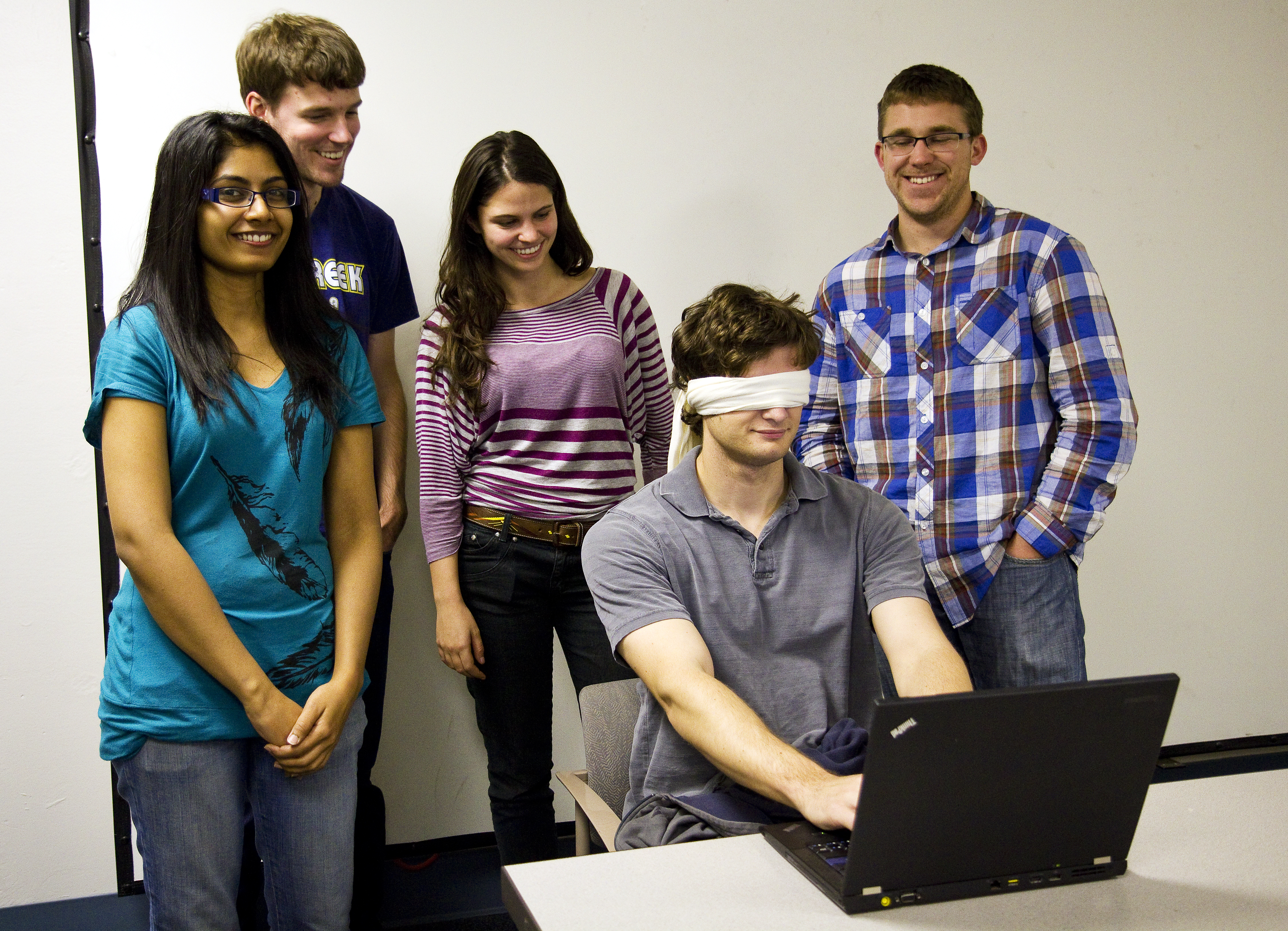Students create software projects for disabled persons in Code for a Cause competition

Third-year computer science student Kyle Morton programs a blind-accessible Sudoku game with his teammates for Code for a Cause.
By Lynn Rice
Jan. 17, 2012 2:06 a.m.
Kyle Morton blindfolded himself and tried playing Sudoku.
“What numbers are already in the first row?” the third-year computer science student asked.
His teammates wrote down his question. By answering this and similar questions a blind person would raise while playing Sudoku, Morton and his teammates programmed a blind-accessible Sudoku game.
The game ended up winning UCLA’s fifth annual Code for a Cause competition. The two-day event is sponsored by Project:Possibility, a nonprofit organization that works to generate software for persons with disabilities and educates college students on how to create that software.
“I never knew that people who were blind used Android phones,” Morton said. “It’s really cool to get insight on how technologies blind persons use ““ like screen readers ““ work.”
Code for a Cause challenged computer science students to develop software that accommodates the needs of people who are low-vision, hard of hearing or otherwise impaired into their software and hardware design, said Sean Goggin, chairman for the board of directors at Project:Possibility and technologies manager at the Center on Disabilities at California State University, Northridge.
Disabilities accommodations are part of universal design concepts, Goggin said. They are required for any company that does business with the U.S. government and are being adopted by most major computer and software companies.
These accommodations also benefit the general populace by making computer processes as simple as possible, Goggin said.
At the start of the competition, students were delivered project statements and divided into teams of three to five based on their interests. Assignments included developing software to help children with autism interact more appropriately in social settings and to help visually impaired persons better interact with maps.
The teams were given workspace and assigned industry mentors. Teams were encouraged to utilize existing code from the Web.
Michael Parker, a mentor who has guided teams at UCLA and USC since Project:Possibility’s inception and also helps choose the projects, said students at the competition continue to exceed his expectations with the software they create.
“We keep ramping up our expectations, and the students continue to surprise us by exceeding them,” said Parker, who worked at Google for several years.
As a mentor, Parker often helps students find the core functionality of their projects so the assignment is not so daunting.
In their final presentations, teams said using programming languages they are not accustomed to was challenging. That includes working together to figure out how to integrate the software’s “back end” not seen by users with the “front end” with which users interact.
“The hardest part was getting started,” said Roger Call, a fifth-year material sciences and engineering student and member of the Accessible Sudoku team. “We spent a great deal of time planning out how to get from a blank slate to something that works and looks nice. This meant a lot of discussion on how the different parts would interact.”
Jake Stothard, a fourth-year computer science student and the organizer of this year’s UCLA event, said the competition is a crash course in working in groups to develop applied software.
Stothard said students often construct elements of operating systems from scratch for their classes, but in this competition, they focus on contributing to something that already exists.
On Sunday afternoon, the teams presented their software to a panel of judges that included engineers from the industry and a UCLA computer science graduate student specializing in accessibility.
The teams were judged on the innovation, usability and presentation of their software, as well as how they met the challenges that occurred during the competition. Judges and students also offered input on how the students might go on to refine and then release their software.
All the code generated during this competition is free and open source, Goggin said, though past competitors have completed projects that they marketed as apps on iTunes.
This year’s winning team from UCLA will go on to compete at the 27th Annual International Technology and Persons with Disabilities Conference, which will be held at Cal State Northridge.


